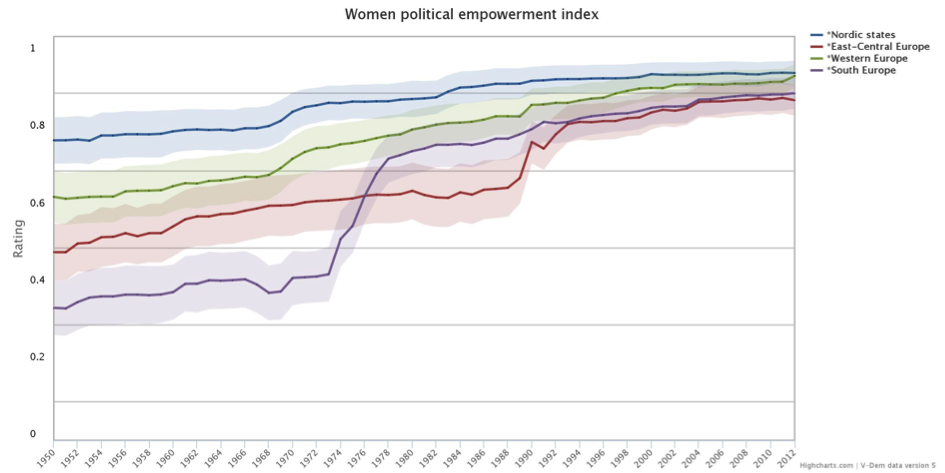The position of women across Europe
By: V-Dem Staff
Feb 23, 2016
How has women’s empowerment in Europe developed over the years? The V-Dem Women Political Empowerment Index measures this for countries worldwide from 1900 to present day. In the index, women’s political empowerment is defined as a process of increasing capacity for women, leading to greater choice, agency, and participation in societal decision-making. The index incorporates three equally weighted dimensions: fundamental civil liberties, women’s open discussion of political issues and participation in civil society organizations, and the descriptive representation of women in formal political positions.
In the chart, the average scores for Central, Eastern, Western, Southern and Northern Europe are presented from 1950 to 2012: To no great surprise, the Nordic states are at the forefront historically, but the difference between them and the other European regions has been decreasing steadily, the graph shows. Southern Europe receives the lowest scores in the beginning of the time-series when women suffered from significant limitations on their political representation and rights. A substantial improvement is noted in the late 1970s, when women in countries such as Portugal received full equality through constitutional amendments or renewals during this period. The convergence of women’s political rights in European countries becomes visible in the last decades. The data indicate that the levels of political empowerment in Europe are quite high, with all regions reaching scores around 0.8.


